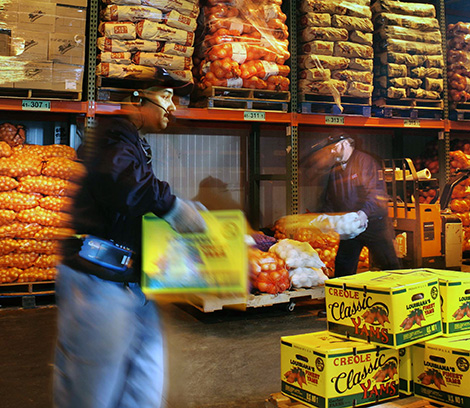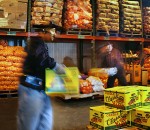Attend the Food Safety Supply Chain Conference, June 5–6, 2017 in Rockville, MD | LEARN MOREFresh foods are critically important to grocery retailers because these categories help create a point of differentiation from competitors. Store operators highlight the fresh sections in ads, promote the categories with in-store signage and now support the departments digitally and through social media. This isn’t to say the center store dry grocery items aren’t marketed, but they don’t get the advertising and promotional love that the produce, meat, dairy, deli, bakery and floral areas receive.
Given this focus, retailers and their suppliers work diligently to ensure the safety of the fresh products offered. They know that one slipup in produce or the deli can wreck the company’s reputation for months or longer. This is particularly true for the many fresh products that don’t have a brand standing behind them to share the impact (or blame).
Ask retail food safety directors where they spend most of their time and the answer 90+ times out of 100 is in the fresh areas. There are simply more things that can potentially go wrong in fresh and less that can go wrong with dry grocery. Sure there is the occasional ingredient issue, but the center store doesn’t have to worry about spoilage or even packaging problems now that nearly everything is tamper proof.
The bioterrorism act mandates that each link in the supply chain knows where their ingredients or product came from and where it was distributed. Recently, much effort has gone into developing traceability technologies and processes with the produce supply chain taking the lead. Growers and their trading partners are piecing together systems that allow practitioners to follow each batch of product through to the retail store, but the operative phrase is “piecing together.” Very few technologies can provide complete farm-to-fork traceability without standard product identification codes used by all participants in the supply chain. When a participant does not use the standard product identifier, visibility to the path of a product ends.
On the regulation front, the seven FSMA rules move the emphasis of the FDA from detection and response to prevention, which impacts both fresh and shelf-stable products. On a practical level, however, compliance with the rules is often more challenging for fresh products because of their limited shelf life. Also, some of the rules apply specifically to produce, meaning retailers and their produce suppliers need to pay special attention to preventing foodborne illness in the department.
At the recent Produce Marketing Association’s Fresh Summit in Orlando, Bob Whitaker, Ph.D., the trade group’s chief science & technology officer, and Jim Gorny, Ph.D., vice president, Food Safety & Technology, both emphasized the importance of communicating each retailer’s and supplier’s compliance with the FSMA regulations to the consumer. The North American Meat Institute, International Dairy-Deli-Bakery Association and other trade groups representing the marketers of fresh products have also been very active in helping both retailers and suppliers comply with the new regulations.
Beyond FSMA, retailers and their fresh foods suppliers need to do more work to not only ensure a safer supply chain, but to let consumers know they are working on food safety every day. Transparency needs to extend throughout the supply chain so suppliers and carriers can report on any potential safety issue from the farm to the checkout stand, because retailers are requiring more support from suppliers and more documentation for each load received. And, audits need to be periodically conducted to ensure accepted industry best practices are being followed.
Technology is helping the food safety process, especially in the fresh area, by organizing documentation for FSMA compliance and by providing supply chain transparency. The systems now available integrate all product and vendor information into a retailer’s ordering systems to ensure every requirement is met before a purchase is completed. They also send out alerts when additional details are required and they confirm that each lot shipped adheres to accepted best practices for food safety.
At the end of the day, all items sold in a supermarket or online must be safe for the consumer. The challenge is somewhat bigger with fresh foods than it is with dry grocery, so retailers and their suppliers must work that much harder to ensure the safety of products sold to their customers. A combination of accurate document management, compliance audits and traceability technology is now the most likely scenario to accomplish this goal.









